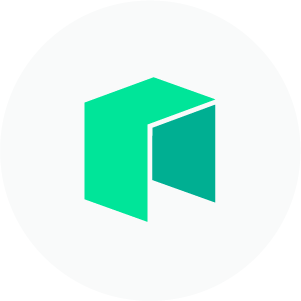GAS token rises 50% in a day, is it driven by South Korean power again?
Editor: Felix, PANews
The veteran public chain Neo's token NEO once created the myth of a thousand-fold increase and was the first to introduce the Byzantine fault tolerance mechanism to public chains. Now, another token of the Neo public chain, GAS, has surged about 650% last month and has risen another 50% today (November 9). Besides the token NEO, what is the GAS token, and what has triggered its explosive growth?
Built-in Destruction Mechanism
Neo is the first blockchain platform to adopt a dual-token mechanism. Neo separates governance rights from network usage rights, allowing users to freely use the network without affecting their governance rights. The total supply of NEO tokens is fixed at 100 million, granting the right to vote and participate in governance and to earn GAS after trading on the Neo blockchain.
The GAS token is the fuel token on the NEO blockchain, used to process transactions on the NEO network. Operating and storing smart contracts on the Neo network requires spending GAS, which leads to the automatic issuance of GAS to NEO addresses. Some exchanges distribute GAS to users holding NEO on their platforms, while others do not. It is reported that Binance was the first exchange to distribute GAS, attracting a large number of Neo holders. This, to some extent, brought traffic to early Binance.
Each block produces five GAS, which are distributed among three roles: 10% is proportionally allocated to all NEO holders, 80% is proportionally allocated to voters of the council members, and 10% is evenly divided among the 21 Neo council members. The minimum unit of GAS is 0.00000001.
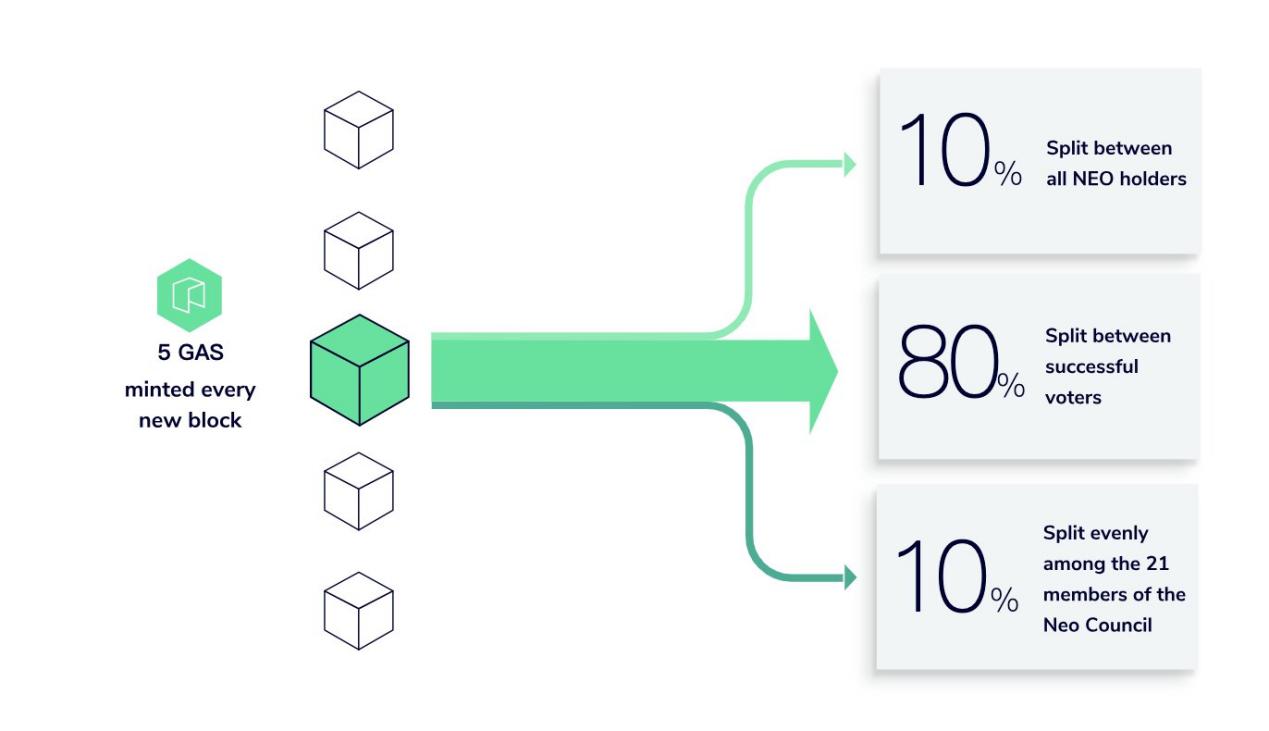
Low Circulation of GAS, Popular in Korea
Currently, the circulation of GAS is 10.13 million (approximately $17.9 million), with a total supply of 17.19 million (approximately $30.4 million) and a maximum supply of 100 million. The current low circulation and market cap of GAS result in low upward pressure.
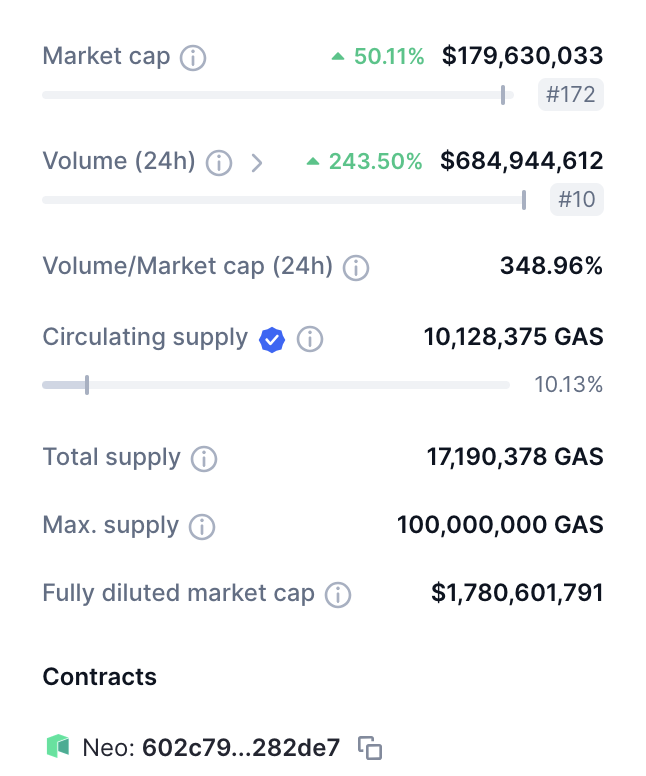 Additionally, the GAS token seems to be popular in Korea. According to monitoring by Lookonchain, as of November 9, 61% of GAS trading volume came from the Korean exchange Upbit. Meanwhile, the price on Upbit is also 1.1% higher than on Binance. Therefore, it can be inferred that the rise in GAS prices is related to Upbit.
Additionally, the GAS token seems to be popular in Korea. According to monitoring by Lookonchain, as of November 9, 61% of GAS trading volume came from the Korean exchange Upbit. Meanwhile, the price on Upbit is also 1.1% higher than on Binance. Therefore, it can be inferred that the rise in GAS prices is related to Upbit.
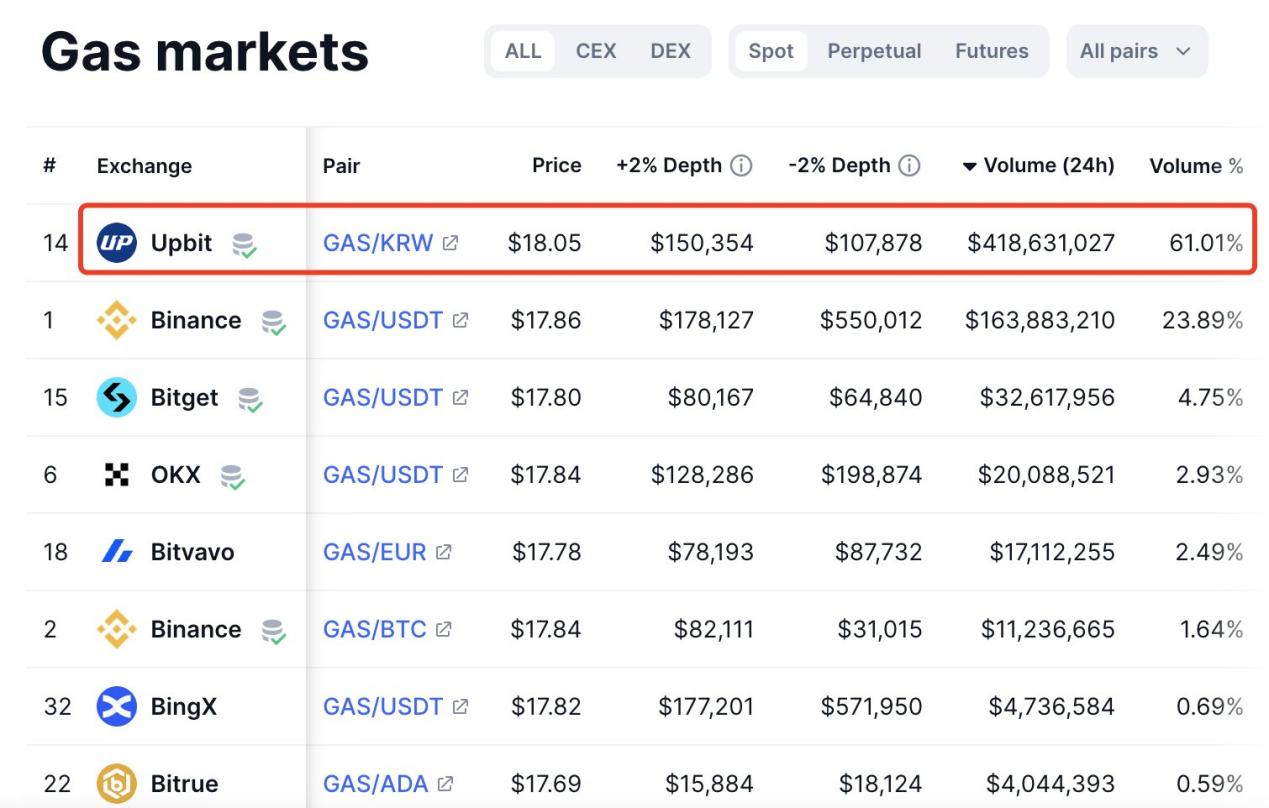
New Sidechain Empowerment, Expanding Use Cases
On October 27, seven years after the launch of the Neo mainnet, founder Da Hongfei revealed that Neo is creating a sidechain compatible with the Ethereum Virtual Machine (EVM) to resist miner extractable value (MEV) manipulation. The sidechain is currently under development, with a testnet planned for release by the end of 2023. The Neo sidechain combines innovative features such as transaction "packaging" and proxy contracts:
- Through "packaging" transactions, the sidechain will encrypt users' transaction content and metadata, effectively hiding sensitive information from potential attackers.
- Proxy contracts will enhance user privacy by hiding users' identities—disguising the true sender of transactions and introducing anonymity to prevent exploitation.
The sidechain expands the use cases of GAS, making it a more versatile asset. GAS holders can vote to decide on Neo sidechain consensus nodes. Furthermore, as the sidechain develops, GAS, as a fuel token, will continue to be consumed. Possibly influenced by this news, GAS began to rise on October 27.
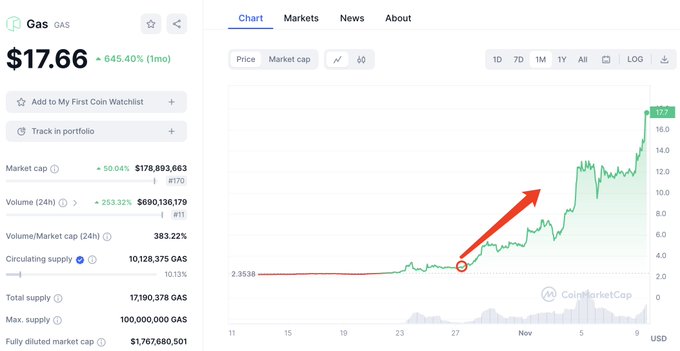
References: Lookonchain, NEO, nikkor.eth





